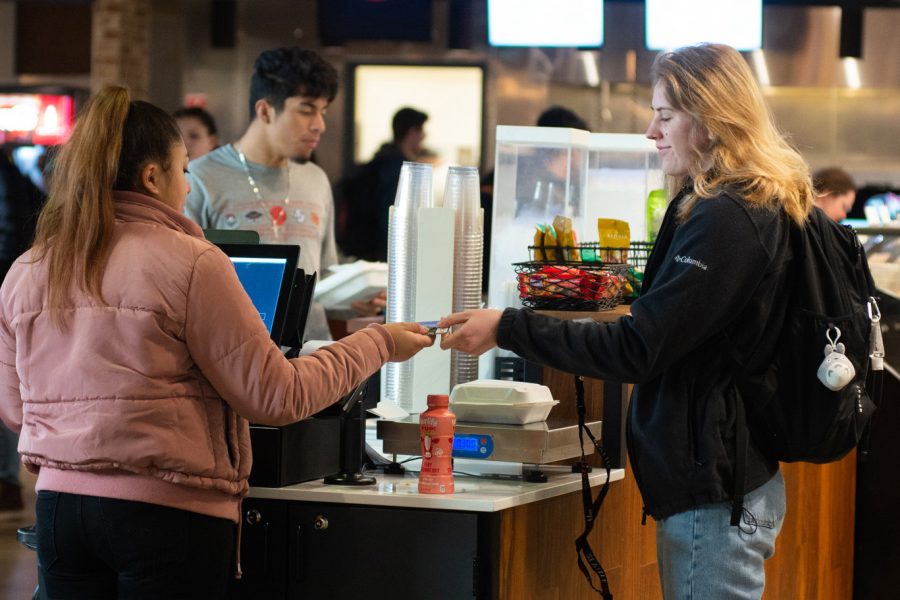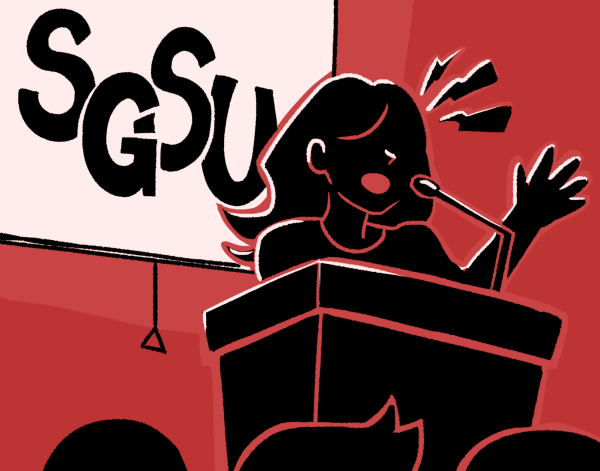The Required Costs of Being a Seattle University Student
According to the Federal Pell Aid received by the school, 17% of Seattle University students fall under the category of low income. With the rising costs of school, there are more and more students looking for ways to save money during their time in school.
All Seattle U undergraduate students are required to live in on- campus housing for two years unless they fulfill the specific requirements for a waiver. Students are additionally required to purchase a meal plan the lowest standard plan being $1600 a quarter. Chartwells doesn’t get any of the leftover money that students have when the quarter ends; this money stays with the university.
Andrew Gaynor, the acting director of Dining Services, explained that Chartwells is considering a change in the meal plan amounts, given how much money students don’t use and therefore lose every quarter.
“It’s too much to afford for most students that aren’t paying for a meal plan. I used to just not eat until I got home at night because the cost of food on campus was just too much.”
Gaynor said that those amounts had been set by Bon Appetit, but they may be up for reconsideration. Gaynor also said that Chartwells has been discussing with Seattle U the possibility of increasing the maximum donation cap from its current $100 limit.
This year, there have been several price increases to food items as Chartwells adjusts to the school. Brie Bordner, the marketing manager for Chartwells, said that these changes in price happened after the company took over Bon Appetit’s contract, which had them keep prices the same for a year.
“We try to listen and, within reason, talk about, ‘Well is this too much or too little,’” Bordner said. “For example, the coffee last quarter was a big hit so we wanted to make sure that the price was low enough to fit the needs of the students.”
Miranda Hernandez-Martinez, a third-year sociology major is a member of the group Students for Economic Justice. She said she no longer eats on campus as the cost of food without a meal plan is too high.
“It’s too much to afford for most students that aren’t paying for a meal plan,” Hernandez-Martinez said. “I used to just not eat until I got home at night because the cost of food on campus was just too much.”
The university is discussing solutions to combat high prices and meal plans, according to Dion Wade, the director of Campus Services. Wade is on an administrative committee that decides what to set the cost at for meal plans, OMA donations and works with the bookstore on their pricing.

For their first two years at Seattle U, students are required to have a minimum meal plan of $1600.
“The end goal is to ensure that students have access to the nutrition options that are here. So the thought is why are students not utilizing the money and how can there be more opportunities for students to feel like they are using their money,” Wade said. “We’ve been looking at different ways to do that, including giving students other places to spend money.”
According to David Stephen, the director of Housing and Residence Life, the reason that Seattle U has the requirement for students to spend two years living on campus is that studies have shown that living on-campus, students have reduced stress and therefore do better in classes.
“Students are more connected to campus services, more connected to faculty and more connected to their peers, so they tend to be more satisfied and feel a deeper connection to the school,” Stephen said. “Seattle U is very tuition-dependent, so every student counts, and we want to retain them as much as possible.”
Dani Jo Bechtold, a fourth-year social work and sociology major and a member of the Students for Economic Justice, does not agree with the benefits of living on campus for two years that Stephen discussed.
“It definitely wasn’t worth it. I am so glad that I was able to get off of campus and into real space. They honestly charge you a ridiculous amount of money to share such a small space with someone else,” Bechtold said. “I understand for the first year, but by the second year, it feels like they are just keeping us on campus to get all the money they can.”
Textbook costs is another area in which students spend a large amount of money, with required books sometimes costing hundreds of dollars. Marc Parrish, the Seattle U bookstore manager, is sympathetic to students who complain about the high prices of textbooks and hopes to ensure that the book costs are not preventing students from learning.
With the recent move of course packs from SuperCopy to the bookstore, and an accompanying price-hike, the cost barrier grew larger in 2020. This is due to the markup at the bookstore that is higher than SuperCopy’s.
Parrish said he is working on a solution on getting the cost of books for students down. In a partnership with the Lemieux Library, Parrish is on the board of Textbook Access and Affordability task force which works to reduce the amount of money that students spend on books every quarter.

This committee was just formed this year and works with the bookstore to figure out what books and articles are needed the most every quarter, then using the library’s budget to buy them.
“Our current process is looking at the data for what students need, and we plan on reaching out to the campus to see what kind of things they need from us,” Parrish said. “We are dedicated to helping students get the books that they need, whether it means establishing a fund for students to get books or getting a little lending library for textbooks, we want to see students succeed.”
The Students For Economic Justice have been working to make campus services more accessible for low- income students. The club came about with a collection of students who identified as low-income or low- income allies got together to help and give a space for students like them.
“For me, it kind of happened because there really weren’t any resources on campus,” Hernandez-Martinez said. “This club really gives me a place to talk about this with other people who really understand me.”
Some of their current projects include working to get ORCA cards for students easier and organizing with groups on campus to increase the visibility of low-income students.
There are many ways that students can work to be allies to low-income students. One way is to buy food for low-income students who don’t have a meal plan, which helps alleviate the food security problems that some face on campus. With the recent cuts to the OMA meal plan donation service, Bechtold said it is also important to donate your extra meal plan money at the end of the quarter.
With a partnership with the Outreach Center, you can also donate textbooks that you no longer use, and the Center will rent them out for students cannot afford them. The SFEJ is also working with Campus Ministry to provide resources for students in need, including a cap and gown for graduation, which can cost over 90 dollars. By donating a cap and gown to them that you won’t need anymore, students who need it will save some money.
Logan may be reached at [email protected]










